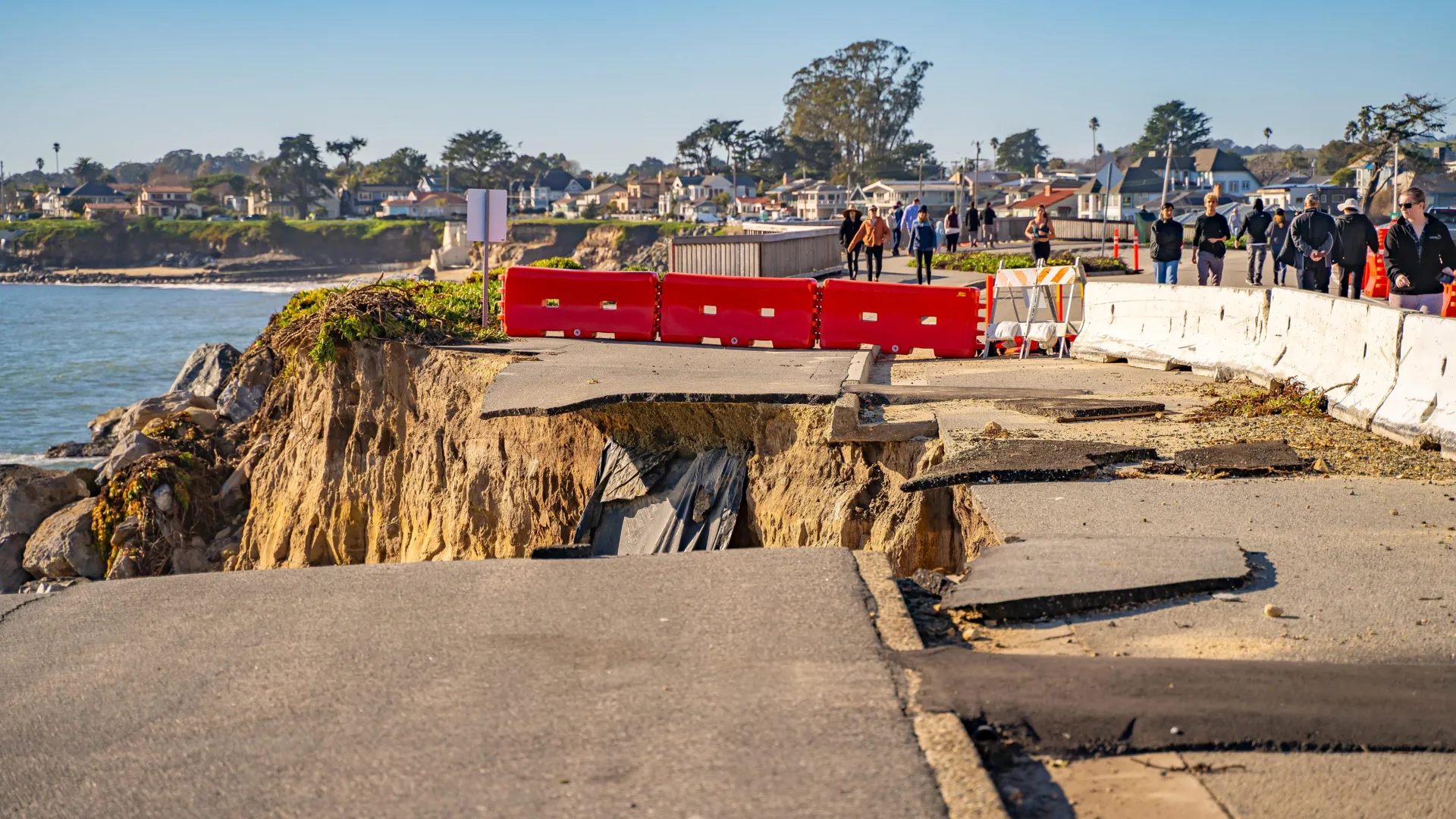They were drilling off Oregon. What they found could shake all of California
- Date:
- October 23, 2025
- Source:
- The Geological Society of America (GSA)
- Summary:
- Scientists have uncovered evidence that megaquakes in the Pacific Northwest might trigger California’s San Andreas Fault. A research ship’s navigational error revealed paired sediment layers showing both fault systems moved together in the past. This finding hints that the next “Big One” could set off a devastating one-two seismic punch along the coast.
- Share:

When the massive subduction zone lying under the Pacific Northwest shifts, it does so violently. A magnitude 9 or higher earthquake in this region would unleash catastrophic shaking, followed by tsunamis and landslides that multiply the destruction. Now, new research published in the journal Geosphere suggests that this "really big one" might not stop there -- it could also set off a major quake in California.
"It's kind of hard to exaggerate what a M9 earthquake would be like in the Pacific Northwest," says Dr. Chris Goldfinger, a paleoseismologist at Oregon State University and lead author of the new study. "And so the possibility that a San Andreas earthquake would follow, it's movie territory."
Two Powerful Fault Systems on the Move
The Pacific coast of the United States sits at the boundary of several massive tectonic plates. North of Cape Mendocino, California, the Juan de Fuca plate dives beneath North America along a megathrust subduction zone known as Cascadia. To the south, the Pacific and North American plates grind past each other along the San Andreas Fault, occasionally producing devastating earthquakes such as the 1906 San Francisco event.
If both of these enormous fault systems were to rupture in close succession, it would redefine the seismic threat facing the entire western United States.
A Lucky Mistake at Sea
The discovery linking the two fault zones happened by accident. During a 1999 research cruise, scientists planned to collect sediment cores off the Pacific Northwest to study ancient Cascadia earthquakes. However, a graduate student accidentally entered an incorrect latitude, sending the ship roughly 90 kilometers south of the intended site -- outside the Cascadia margin and into San Andreas territory.
"We wound up off northern California," says Goldfinger. "When I woke up, I was pretty hot. But, once we were there, I thought, 'well, let's take a core here.'"
Strange Layers in the Sediment
The core retrieved from the submarine Noyo Canyon near Fort Bragg revealed something unexpected. Over the past 3,000 years, it contained a repeating pattern of turbidites -- sediment layers deposited by underwater landslides known as turbidity currents. Normally, these deposits show a simple pattern with coarse grains at the bottom and finer grains on top. Yet many of the layers in both the Noyo Canyon and Cascadia cores appeared in distinctive pairs.
"There were these big, thick, sandy doublet events where it had a fine-grained element, and on top of it was a very coarse grained sandy unit. And we were just scratching our heads," says Goldfinger.
Evidence of Linked Megaquakes
Radiocarbon dating revealed that many of these paired deposits north and south of Cape Mendocino formed at nearly the same time, within the limits of dating accuracy. That synchronicity was too frequent to be coincidental. After excluding other possible explanations, the researchers concluded that the first deposit in each pair likely resulted from a major earthquake on the Cascadia megathrust, while the second was caused by movement along the nearby San Andreas Fault.
"A lightbulb went on and we realized that the Noyo channel was probably recording Cascadia earthquakes, and that at a similar distance, Cascadia sites were probably recording San Andreas earthquakes," says Goldfinger. "Well, what if? What if Cascadia went off and triggered a weak turbidity current near the San Andreas, and then the San Andreas went off some time later and triggered a very coarse, sandy deposit to come down. It would create this upside-down doublet stratigraphy."
Could Two Quakes Strike Within Hours?
Exactly how much time might separate these linked events remains unclear, since later activity may have eroded some sediment between layers. However, in several cores, the second deposit appears to have formed within minutes or hours of the first. If that interpretation is correct, it suggests that a Cascadia megathrust quake could quickly trigger a massive San Andreas event, shaking nearly the entire Pacific coast in rapid succession.
Such a cascading sequence would pose a severe threat to lives, infrastructure, and emergency preparedness across the region.
"I'm from the Bay Area originally," says Goldfinger. "If I were in my hometown of Palo Alto, and Cascadia went off, I think I would drive east. There looks to me like a very high risk the San Andreas would go off next."
Story Source:
Materials provided by The Geological Society of America (GSA). Note: Content may be edited for style and length.
Journal Reference:
- C. Goldfinger, J. Beeson, B. Black, A. Vizcaino, C.H. Nelson, A. Morey, J.R. Patton, J. Gutiérrez-Pastor, C. Romsos, M.D. Walzcak. Unravelling the dance of earthquakes: Evidence of partial synchronization of the northern San Andreas fault and Cascadia megathrust. Geosphere, 2025; DOI: 10.1130/GES02857.1
Cite This Page: